Abstract
Objective
Methods
Results
References
Figure 1
Comparison of shear bond strength (SBS) between non-thermocycled and thermocycled groups. Identical letters (A, B, C, a, b, c) indicate the lack of a significant difference between mean (p > 0.05). NP, No-primer; NPT, no-primer with thermocycling; PC, Porcelain Conditioner; PCT, Porcelain Conditioner with thermocycling; ZP, Z-PRIME Plus; ZPT, Z-PRIME Plus with thermocycling; MP, Monobond Plus; MPT, Monobond Plus with thermocycling; ZL, Zirconia Liner Premium; ZLT, Zirconia Liner Premium with thermocycling.
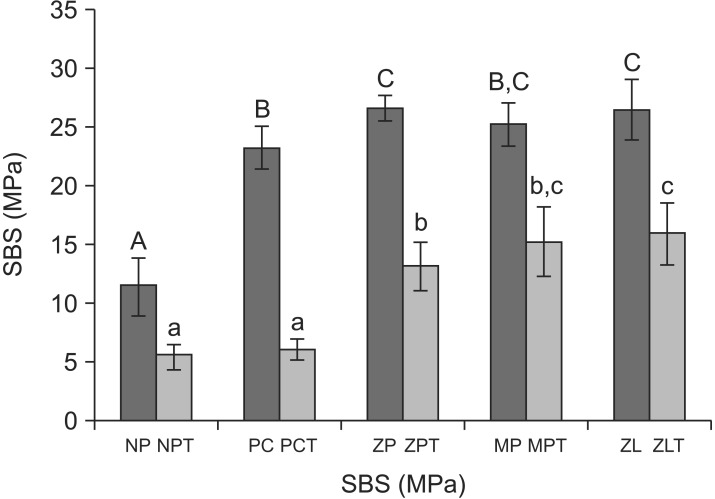
Figure 2
Representative stereoscopic micrographs (16×) of the adhesive failure mode (A, F) and the mixed failure mode (B-E, G-J). NP, No-primer; NPT, no-primer with thermocycling; PC, Porcelain Conditioner; PCT, Porcelain Conditioner with thermocycling; ZP, Z-PRIME Plus; ZPT, Z-PRIME Plus with thermocycling; MP, Monobond Plus; MPT, Monobond Plus with thermocycling; ZL, Zirconia Liner Premium; ZLT, Zirconia Liner Premium with thermocycling.
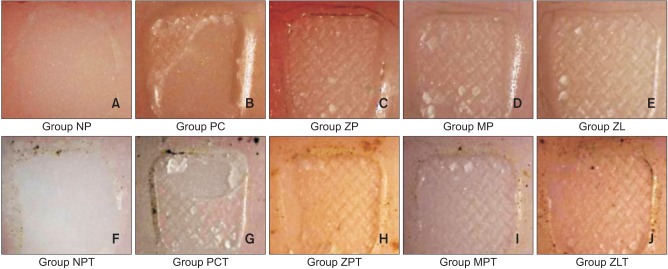
Figure 3
Representative scanning electron micrographs (200×) of the adhesive failure mode (A, F) and the mixed failure mode (B-E, G-J). NP, No-primer; NPT, no-primer with thermocycling; PC, Porcelain Conditioner; PCT, Porcelain Conditioner with thermocycling; ZP, Z-PRIME Plus; ZPT, Z-PRIME Plus with thermocycling; MP, Monobond Plus; MPT, Monobond Plus with thermocycling; ZL, Zirconia Liner Premium; ZLT, Zirconia Liner Premium with thermocycling.
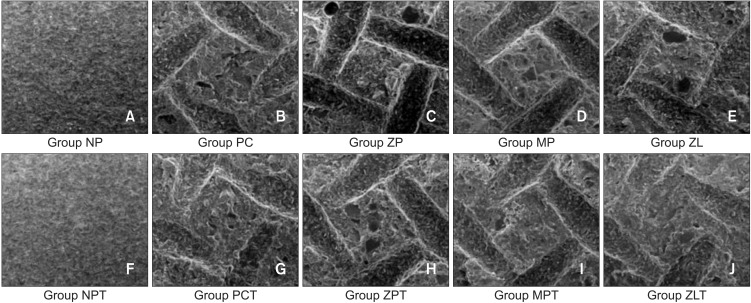
Table 1
Characteristics of experimental groups
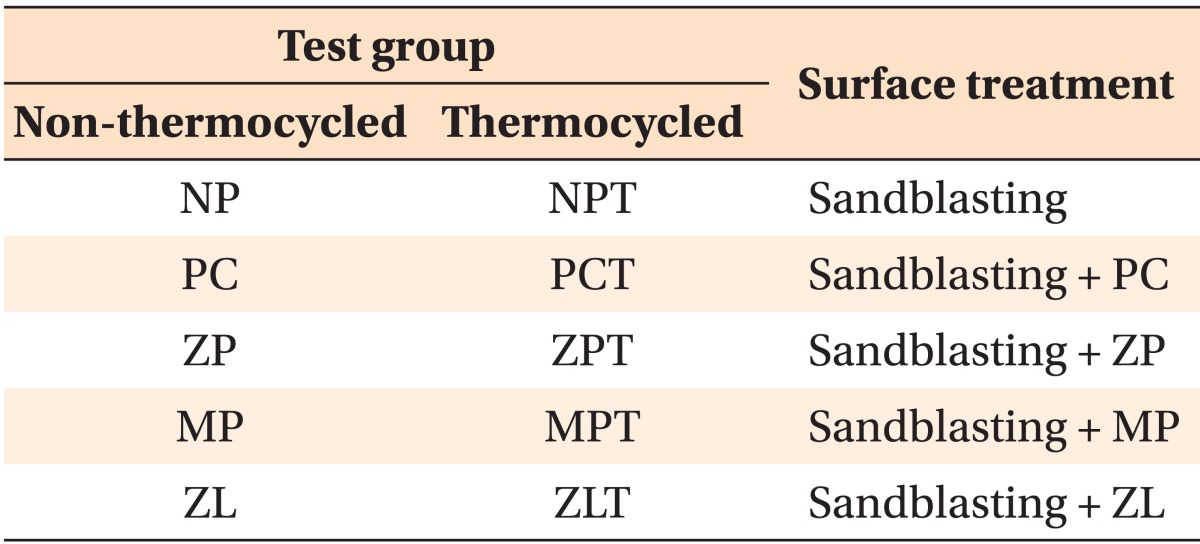
NP, No-primer; NPT, no-primer with thermocycling; PC, Porcelain Conditioner; PCT, Porcelain Conditioner with thermocycling; ZP, Z-PRIME Plus; ZPT, Z-PRIME Plus with thermocycling; MP, Monobond Plus; MPT, Monobond Plus with thermocycling; ZL, Zirconia Liner Premium; ZLT, Zirconia Liner Premium with thermocycling.
Table 4
Post-hoc test of pair differences comparing mean bond strengths between groups
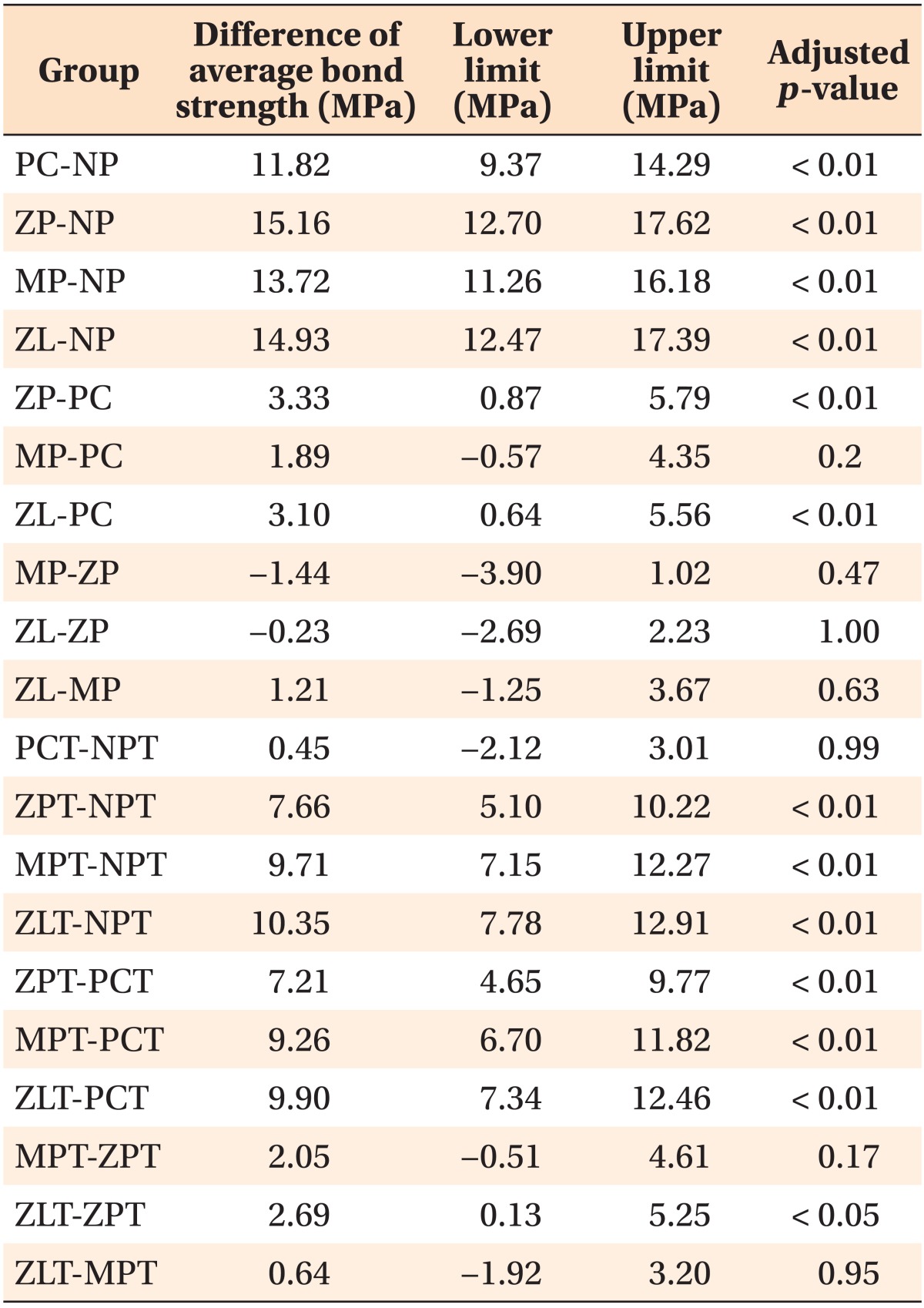
NP, No-primer; NPT, no-primer with thermocycling; PC, Porcelain Conditioner; PCT, Porcelain Conditioner with thermocycling; ZP, Z-PRIME Plus; ZPT, Z-PRIME Plus with thermocycling; MP, Monobond Plus; MPT, Monobond Plus with thermocycling; ZL, Zirconia Liner Premium; ZLT, Zirconia Liner Premium with thermocycling.
Table 5
Comparison of shear bond strengths between primer and thermocycling groups
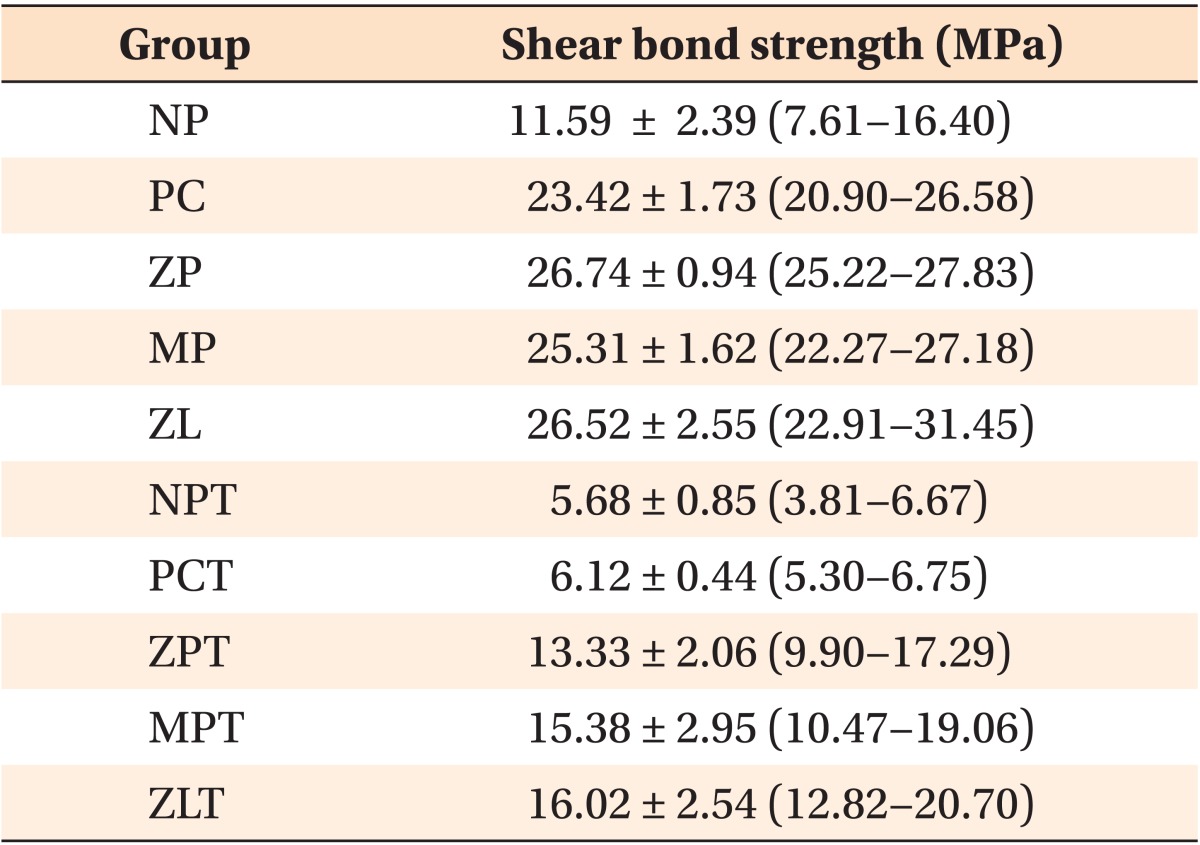
Values are presented as mean ± standard deviation (range). NP, No-primer; NPT, no-primer with thermocycling; PC, Porcelain Conditioner; PCT, Porcelain Conditioner with thermocycling; ZP, Z-PRIME Plus; ZPT, Z-PRIME Plus with thermocycling; MP, Monobond Plus; MPT, Monobond Plus with thermocycling; ZL, Zirconia Liner Premium; ZLT, Zirconia Liner Premium with thermocycling.
Table 7
Frequency distribution of failure modes

ARI, Adhesive remnant index score; NP, no-primer; NPT, no-primer with thermocycling; PC, Porcelain Conditioner; PCT, Porcelain Conditioner with thermocycling; ZP, Z-PRIME Plus; ZPT, Z-PRIME Plus with thermocycling; MP, Monobond Plus; MPT, Monobond Plus with thermocycling; ZL, Zirconia Liner Premium; ZLT, Zirconia Liner Premium with thermocycling; SD, standard deviation.




 PDF
PDF ePub
ePub Citation
Citation Print
Print



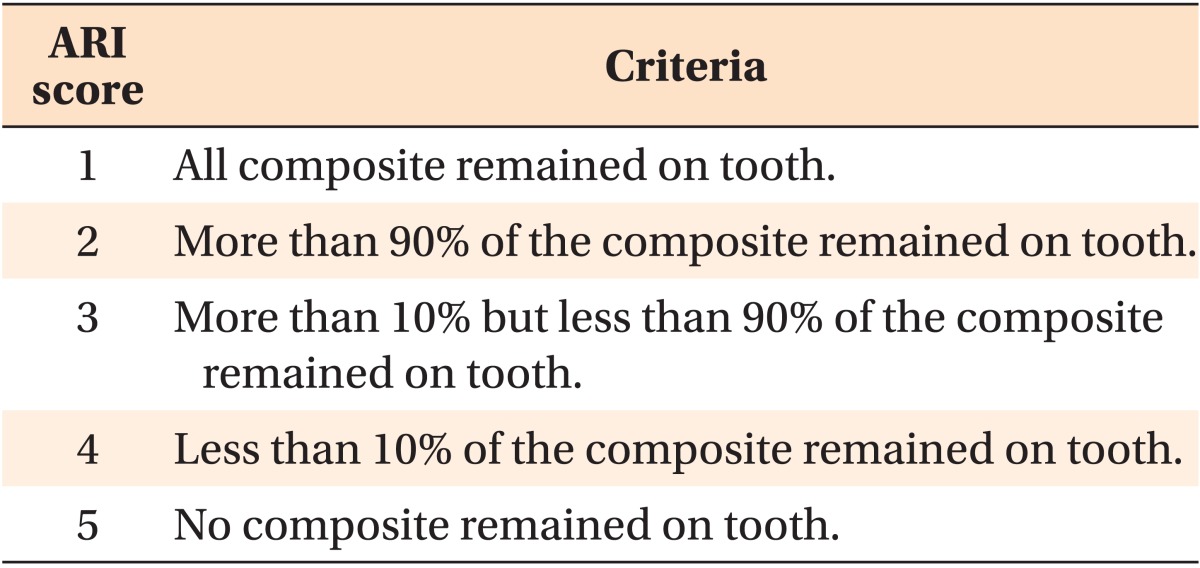

 XML Download
XML Download